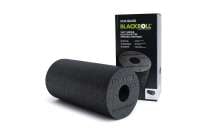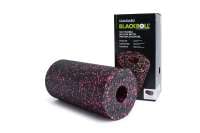
Exercise and physical activity are undeniably important for our health and well-being. Whether at the gym, while running, cycling, or engaging in other sports – Many people incorporate regular movement into their daily lives to stay fit and maximize their physical potential. However, when it comes to sports and fitness, the topic of stretching is often controversial. The question of whether one should stretch before exercise or not has led to numerous discussions and disagreements.
While many people consider stretching an essential part of their training, there are also voices claiming that it can be ineffective or even harmful.
In this blog article, we will delve into this question and shed light on the truth about stretching to provide you with informed guidance.
-
How does stretching work?
-
Current scientific findings
-
To stretch or not to stretch?
-
Pro Arguments
-
Con Arguments
-
-
Alternative approaches
1. How Does Stretching Work?
Stretching is a practice in which muscles or tissues are elongated to improve their flexibility or range of motion.
What exactly happens in the body?
-
Muscular stretching: The muscle fibers are lengthened, resulting in increased muscle stretching. This can help improve muscle elasticity, increase their flexibility, and enhance the range of motion in the affected joints.
-
Improved joint mobility: The surrounding muscles and tissues, such as ligaments and tendons, are stretched and elongated. This can improve joint mobility by enabling them to perform a greater range of motion.
-
Enhanced blood circulation: Blood flow to the stretched muscles is increased. Improved circulation means more oxygen and nutrients reach the muscles, while waste products are efficiently removed. This can help improve muscle function and support post-workout recovery.
-
Muscular relaxation: Stretching can help reduce muscle tension and cramps often caused by excessive muscle tightness.
-
Improved proprioception: Proprioception is the awareness of body position in space. Stretching stimulates the nerve receptors in muscles and tendons, which can lead to enhanced proprioception. This can help improve coordination and balance.
There are various types of stretching, including:
-
Static stretching: A position is held where the muscle or tissue is stretched for a specific period, often between 15 and 60 seconds. It is the most traditional form of stretching and is often applied as part of warm-ups or cool-downs in training routines.
-
Dynamic stretching: Muscles and joints are put into motion while being stretched. Controlled movements are performed to expand the range of motion and prepare the muscles for the upcoming activity. Dynamic stretching is often used before training or competitions in sports like soccer or basketball.
-
PNF stretching (Proprioceptive Neuromuscular Facilitation): This is an advanced technique that combines isometric muscle contractions with stretching. It is often performed with a partner and aims to improve flexibility by activating nerve receptors in the muscle.

For a long time, it was believed that stretching prevents muscle injuries, improves flexibility, optimizes muscle function, and enhances athletic performance. Many athletes and fitness enthusiasts considered static stretching as a fixed routine in their training and saw it as a necessity to avoid injuries and optimize performance. However, recent scientific findings have challenged these long-standing beliefs and led to a controversial discussion about the effectiveness and benefits of stretching.
2. Current Scientific Findings
In recent years, it has been shown that static stretching before exercise or competition may not be effective in preventing injuries or improving athletic performance. For example, a meta-analysis of research published in the British Journal of Sports Medicine found that static stretching before exercise does not significantly reduce injuries. There are also studies suggesting that static stretching before exercise may even decrease muscle strength and explosive performance.
There are also doubts about the effectiveness of stretching in improving flexibility. A study published in the Scandinavian Journal of Medicine and Science in Sports found that a short bout of dynamic stretching before exercise was as effective as static stretching in terms of improving flexibility. Other studies have shown that long-term improvement in flexibility is more likely to be achieved through regular and specific stretching outside of training.
Lack of Guidelines
Another factor complicating the debate about the effectiveness of stretching is the lack of standardized recommendations and individual differences in stretching practices. There are no standardized guidelines on how often, how long, and how intensely one should stretch. Stretching practices can vary widely depending on the sport, individual fitness level, age, injury history, etc. A stretching program that may be effective for one person may not yield the same results for another person.
3. To Stretch or Not to Stretch?
All of this does not mean that stretching is pointless. The controversies merely indicate that we might have more gray areas than black and white. There are many insights and facts that speak both for and against stretching. Let's take a look at them.
-
Pro Arguments
-
Flexibility: Flexibility, which refers to the ability of muscles and joints to move freely, is important in many sports and daily activities. It is believed that regular stretching can help improve flexibility and increase range of motion. There are studies suggesting that regular stretching can improve joint mobility, which can be particularly beneficial for sports that require high levels of flexibility (e.g., gymnastics, ballet, martial arts, yoga).
-
Agility: A study published in The Journal of Strength and Conditioning Research (2013) examined the effects of static stretching on the performance of speed and agility exercises in athletes with different fitness levels. The authors found that short-duration static stretching (10-30 seconds) before activities requiring speed and agility can improve performance, especially in athletes with low fitness levels.
-
Specific situations: Dynamic stretching can help warm up the muscles and increase blood circulation as part of a warm-up before intense training sessions or competitions. Stretching can also be used after injuries or during rehabilitation to maintain or restore flexibility and relax the muscles.
-
Con Arguments
-
Performance reduction: Several recent studies have indicated that static stretching before exercise may not impair or even negatively affect muscle strength and maximal force production. For example, a study published in the Journal of Strength and Conditioning Research found that static stretching before exercise did not enhance muscle strength and could reduce maximal force production. This has raised concerns that stretching before exercise may not provide the desired performance benefits.
-
Risk of injury: Furthermore, there is evidence that excessive or improper stretching can lead to risks and injury hazards. Stretching in extreme positions or with excessive force can result in muscle or tendon injuries. Especially in untrained individuals or beginners, improper stretching can lead to injuries as they may not have the proper technique or knowledge to perform stretching safely.
-
Lack of guidelines: Age has been shown to influence flexibility, as older individuals often have less flexibility compared to younger individuals. A person's flexibility level can also vary depending on their genetic predisposition and activity history. Individuals who already receive sufficient flexibility training in their sports activity or discipline may benefit less from additional stretching. However, people are rarely informed about which stretching practices are best for them. Instead, there are generalized instructions.
4. Alternative Approaches
Traditional stretching is not the only method to improve flexibility and mobility. There are various alternative approaches that can be considered to promote physical mobility.
Targeted Warm-Ups
A targeted warm-up before exercise can help warm up the muscles and improve blood circulation, which can lead to increased flexibility. Dynamic exercises like arm circles, leg swings, or trunk rotations can be performed as part of the warm-up to prepare the joints and muscles for the upcoming activity.
Active Warm-Ups
Active warm-up involves performing light aerobic exercises like jogging, cycling, or jumping rope to raise the body's temperature and activate the muscles. Active warm-up can increase blood circulation and prepare the muscles for training or physical activity, contributing to improved flexibility.
Functional Training
Functional training involves exercises that target everyday movement patterns and strengthen the muscles in their natural function. This can help improve flexibility and mobility in functional movements that are commonly encountered in daily life or sports activities.
Fascia Training
Fascia refers to the connective tissue in the body that surrounds muscles, bones, and organs. Fascia training involves specific exercises and techniques to improve the flexibility and mobility of fascia. This can be achieved through the use of foam rollers, balls, or specific exercises that aim to stretch and mobilize the fascia.
Yoga and Pilates
Yoga and Pilates are well-known methods that can improve flexibility, mobility, strength, and balance. By performing various yoga or Pilates exercises, muscle stretching, strengthening, and body stabilization can be promoted, leading to improved flexibility and mobility.

Conclusion
In summary, the current scientific findings lead to the following conclusions:
Pro Arguments:
-
Flexibility: stretching can improve flexibility and increase range of motion.
-
Agility: short static stretching before activities that require speed and agility can enhance performance.
-
Specific situations: dynamic stretching as part of warm-up before intense training or competitions, as well as stretching during rehabilitation after injuries, can be beneficial to warm up the muscles, increase blood circulation, and maintain or restore flexibility.
Con Arguments:
-
Performance reduction: static stretching before exercise may not improve muscle strength and maximal force production and may even have a negative impact.
-
Risk of injury: excessive or improper stretching can pose risks and injury hazards, especially in untrained individuals or when stretching in extreme positions or with excessive force.
It is important to note that there are no standardized recommendations for stretching, and stretching practices can vary widely. It is advisable to consider individual differences such as the sport, fitness level, age, and injury history. Overall, the topic of stretching is controversial, with both proponents and critics.
In certain situations, stretching can be replaced by:
-
Targeted warm-up
-
Active warm-up
-
Functional training
-
Fascia training
-
Yoga and Pilates
How did you like the article?
With your feedback, we can improve our content.
❤️ Very interesting! - ☺️ Okay. - ☹️ Not interesting.


















